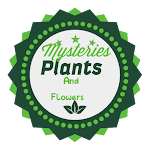In the realm of herbalism, few plants have captured the attention of traditional practitioners and modern researchers alike like Ulmus rubra, commonly known as Slippery Elm. This majestic tree has been a staple in natural medicine for centuries, and its benefits extend far beyond its reputation as a digestive aid. Let's delve into the world of Ulmus rubra and explore its history, uses, and surprising applications.
A Rich History
Ulmus rubra's use dates back to ancient North America, where indigenous tribes revered it for its medicinal properties. In traditional European medicine, Slippery Elm was used to treat a range of ailments, from digestive issues to skin conditions and respiratory problems. Its popularity endured through the Middle Ages and into modern times, with its soothing and protective properties taking center stage.
Medicinal Properties
☘Slippery Elm contains a unique combination of mucilages, flavonoids, and phenolic acids, which contribute to its:
Demulcent properties, soothing and protecting mucous membranes
☘Anti-inflammatory effects, reducing pain and swelling
☘Antioxidant properties, protecting against cell damage and inflammation
Prebiotic properties, supporting gut health and digestion
Surprising Uses
Slippery Elm is used in:
🌱Herbal teas and infusions, soothing digestive issues and promoting gut health
🌱Tinctures and supplements, providing anti-inflammatory and antioxidant benefits
🌱Skincare products, thanks to its soothing and protective properties
🌱Animal care, to support digestive health and reduce anxiety in pets
Growing and Harvesting
Slippery Elm is a deciduous tree that thrives in well-drained soil and full sun. Harvest the inner bark in spring or fall, drying it promptly to preserve its potency.
Conclusion
Ulmus rubra is a versatile and underappreciated herb, offering a range of benefits for our overall well-being. By exploring its medicinal properties and uses, we can unlock its full potential and discover new ways to incorporate it into our lives. Share your experiences with Slippery Elm in the comments below, and let's continue exploring the wonders of the herbal world together!

